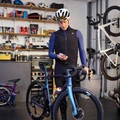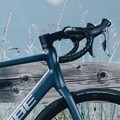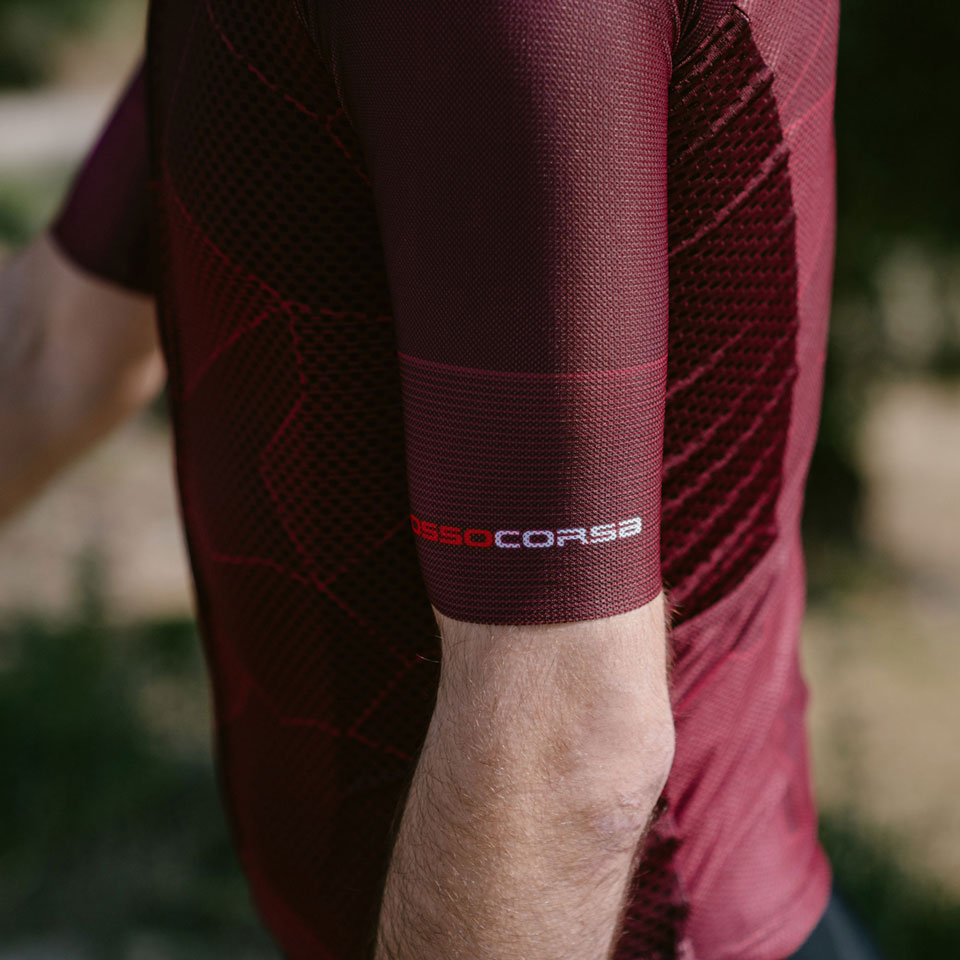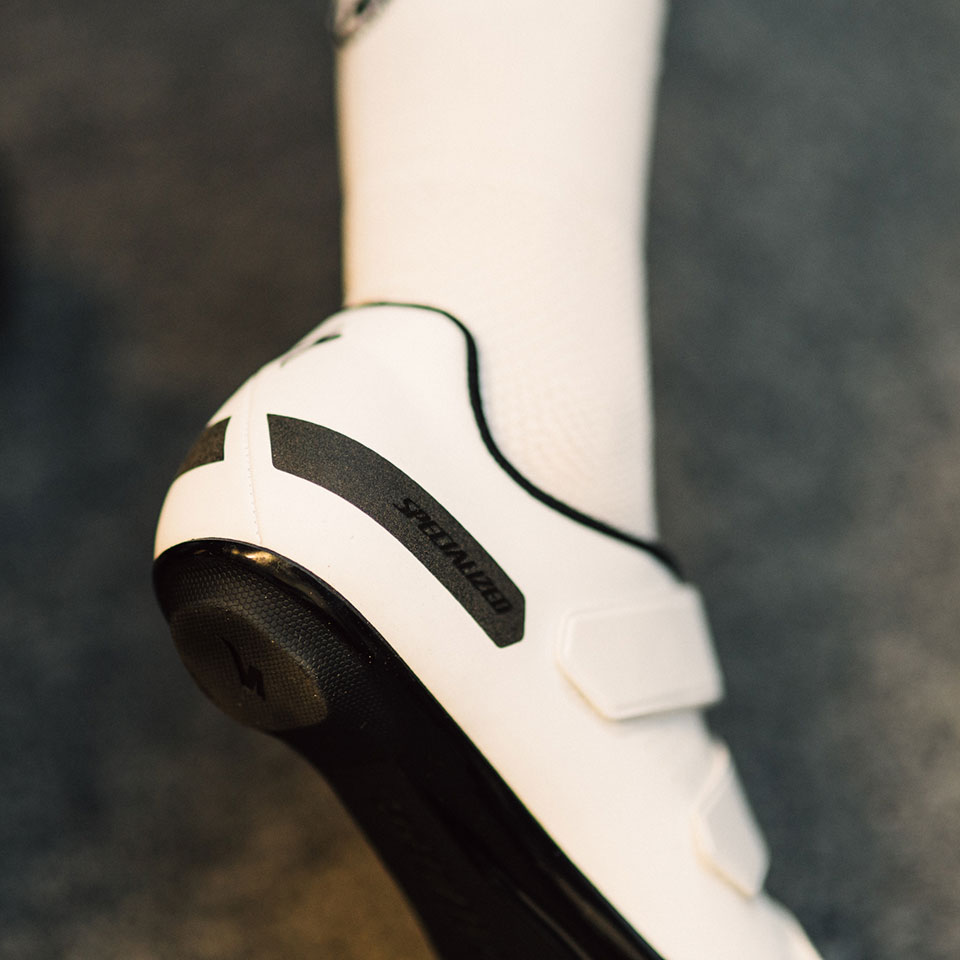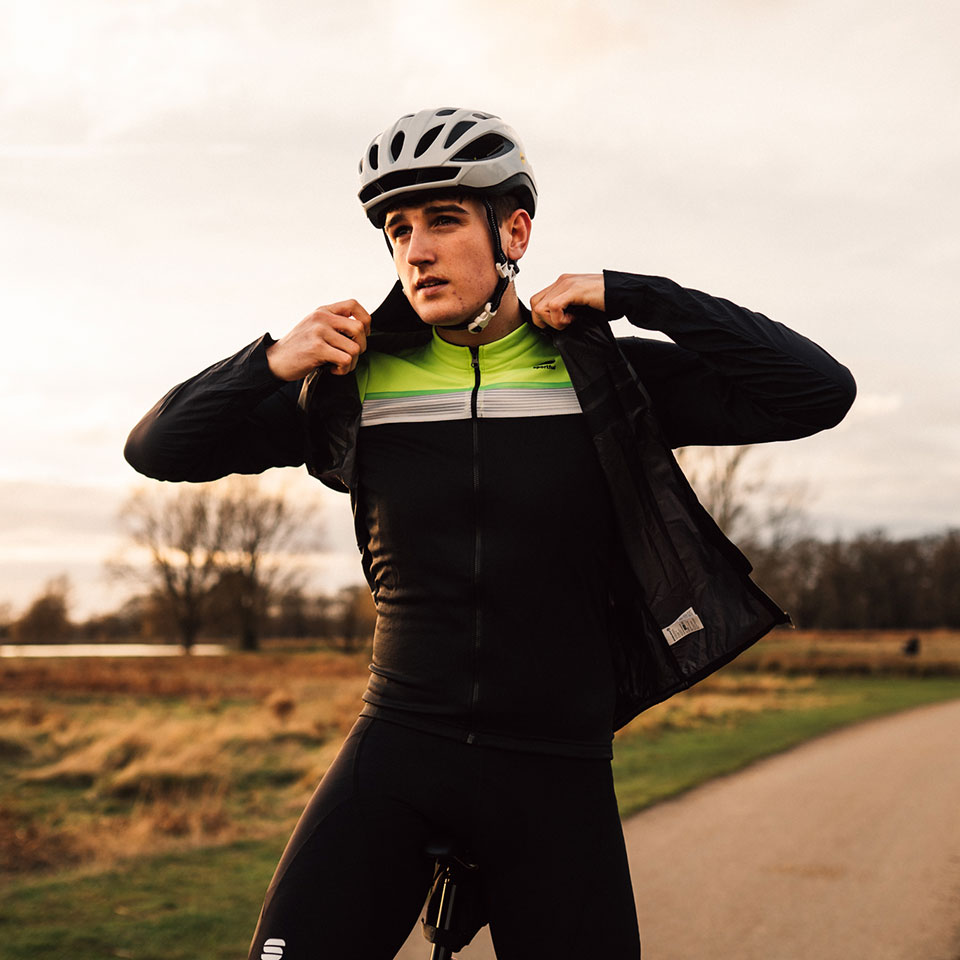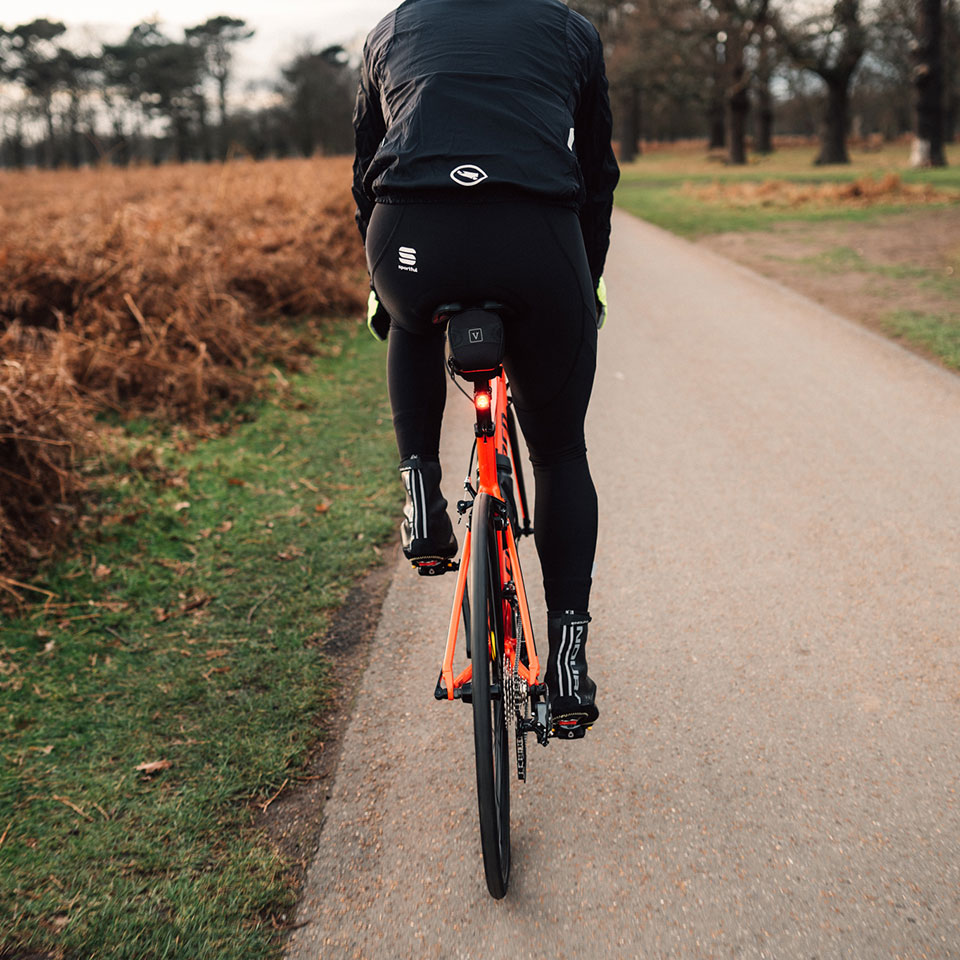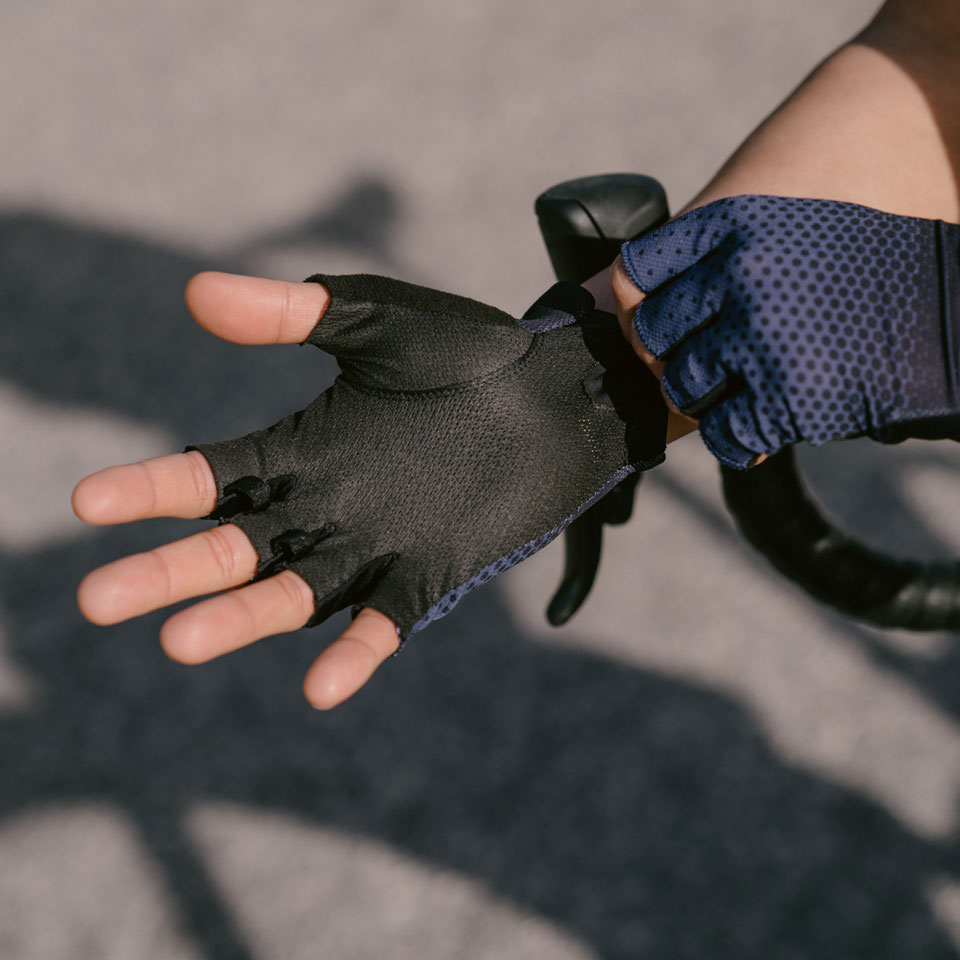
Clothing
New to Road Cycling
Now that you have a road bike, it’s time to get yourself kitted out. Whilst it’s perfectly possible to go for a ride in trainers, casual shorts and a T-shirt, your ride will be a lot more enjoyable and your nether regions very grateful, if you start out with a basic wardrobe of cycling specific clothing.
Bib Shorts and Bib Tights
A good pair of shorts are without doubt the most important piece of cycling attire. The integrated pad is what differentiates cycling shorts from other Lycra shorts, and what provides sufficient comfort and protection to enable you to spend hours in the saddle. Always worn next to the skin with no underwear, they come in two forms; one with a simple elastic waistband, the other held up by the integrated Lycra ‘braces’. The ‘braces’ style, known as ‘bib’ shorts or tights are the most popular as they prevent any pressure across your stomach, whilst also stopping a bare-fleshed gap developing on your back if your top rides up at all. It could also be argued that the bib style is more flattering and might better disguise any unwanted bulges!
Just like shorts, Bib tights, also utilise an integral Lycra brace to keep them in place, and these perform a secondary function in adding a welcome extra layer around your kidney area for additional insulation. Some bib tights come with pads built in like cycling shorts, while others come without pads and are designed to be worn over the top of your preferred padded shorts.
Jerseys
Coupled with the shorts, the other staple of your riding wardrobe should be a cycling jersey. A jersey should be reasonably close fitting for comfort and aerodynamics, with the fit varying between styles and brands, it should be simple to find one that you are comfortable in. Some use full length zips, and others only half zips, but should nature call, a full zip jersey is a lot easier to remove, especially with full pockets.
A full zip can also provide a lot more ventilation should it be required. The pockets on cycling jerseys will be around the back, so as not to sag horribly when leaning forward on the bike, and there will generally be three of them. A zipped pocket for securing keys is a useful addition to some jerseys. Check that these pockets are accessible when riding, and don’t sit too high up your back, as you will sometimes want to access them on the go.
Shoes
If you have fitted clipless pedals you will need a cycling specific pair of shoes. These have a number of advantages over trainers. They are much stiffer and so both support your feet and allow more power to be transferred to the pedals and in turn the road. They should also be reasonably close fitting but not tight, so your feet don’t move whilst pedalling. The adjustment mechanisms, be they Velcro or ratchet based can generally be altered quickly whilst riding, should a tweak be required. The sole should also have the correct drilling to pair with your pedals of choice too.
Helmets
All helmets sold by Sigma Sports are certified with European CE EN1078, meaning they have all passed stringent safety tests. As with most items in this article, fit should be the paramount concern when choosing a helmet. In order to do its job and protect you in the event of an accident, the helmet needs to fit properly. Thankfully these days most road cycling helmets come in different sizes and are fitted with some sort of micro-adjustment system that cradles the back of the head securely, as well as the familiar chin strap.

It is worth mentioning that peaked mountain bike helmets aren’t really suitable for use on a road bike as the lower riding position will mean that the peak may well obscure the road ahead, particularly when riding on the drops. A peaked helmet may also cause neck and shoulder ache as you crane to see past the peak, so a road bike helmet without a peak is both safer and more comfortable. Road bike helmets come in two main styles, with standard helmets concentrating on providing good ventilation by way of many vents, and the more aerodynamic styles forgoing some of the venting for the sake of lowering wind resistance. The standard style is probably most appropriate as a first purchase, as well as generally being less expensive. Finally, don’t forget that all helmets should be replaced after a certain number of years so that they can continue to provide protection, even if they have never taken an impact; please see the manufacturer’s recommendation.
Layering
If you live in a lovely sunny country, where temperatures never drop below 20 degrees, and it rarely rains, you can stop reading now. Unfortunately, that isn’t the case here in Britain, and the changeable climate presents a perennial problem for the keen cyclist; shorts and jersey are rarely sufficient protection against the elements. Carrying mountains of excess clothing though is not practical. What is more, cycling uphill generates huge amounts of heat even in freezing weather, yet that warmth very quickly dissipates after a just a few minutes of riding downhill, and sweat dampened clothing can soon feel very chilly.
Jackets
The key to comfort is to use layers, rather than one thick or bulky piece of clothing. After the shorts and jersey, the next key piece of clothing is, without doubt, a lightweight, packable windproof jacket. There are very few days in the UK when it isn’t appropriate to pop one of these just-in-case items into your back pocket. Windchill at speed can quickly make a mockery of the supposed air temperature and a good quality jacket will prove invaluable when fixing punctures on a windy hilltop or surviving an unexpected shower. A top tip for the windproof jacket is to keep it in a small sealable plastic bag. This allows it to fit more easily in your back pocket, prevents random arms escaping and flapping around, and also stops your sweat causing any issues with the fabric over the long term (as you will hopefully be carrying it more than you will be wearing it).
Base Layers
Should the weather look less promising from the outset, a short or long sleeved base layer can be added under the jersey to provide insulation. In fact, many riders wear a short-sleeved base layer even in hot conditions to help wick sweat away. Base layers are generally constructed from two types of fabric; synthetic and natural (usually lightweight merino wool). Typically synthetics will wick the sweat away better, dry more quickly and be less expensive. However, merino wool will remain warm even when damp, and will not smell as much after a strenuous ride. Many people also simply prefer the soft feel of the natural fabric.
Gloves
Gloves and mitts serve three purposes. The first is to protect your hands in the event of a crash, secondly, they add grip between your hands and the bar tape and thirdly, and more so in the case of gloves, they keep your digits warm when the wind bites and the temperature drops. When considering which pair of gloves are right for you, consider the fastening mechanism, some come with a Velcro strap, others do not. Another consideration is the fit. A tight pair of gloves may look good but too tight and they can restrict blood flow to your fingers and consequently make your hands colder.
Visibility is another important point to consider. Many gloves feature reflective elements to help keep you seen out on the road, especially when signalling. Whether mitts or full finger gloves, elements such as grip and a design that allows you to safely operate your gears and brakes should be tested before heading out on the road.
These seven simple items will provide a great start to a year-round cycling wardrobe that should keep you comfortable and safe in a wide variety of conditions, leaving you to concentrate on enjoying the ride.
Browse our complete cycling clothing range in store or online.

